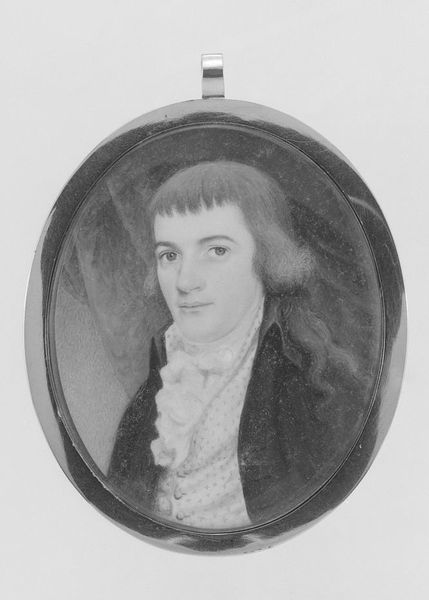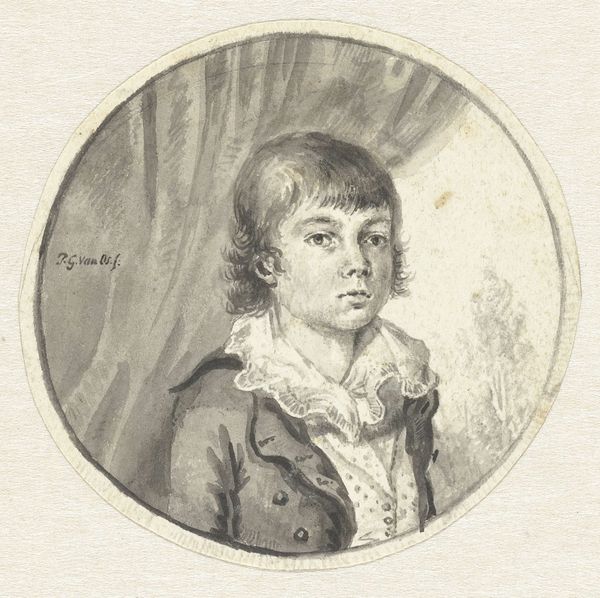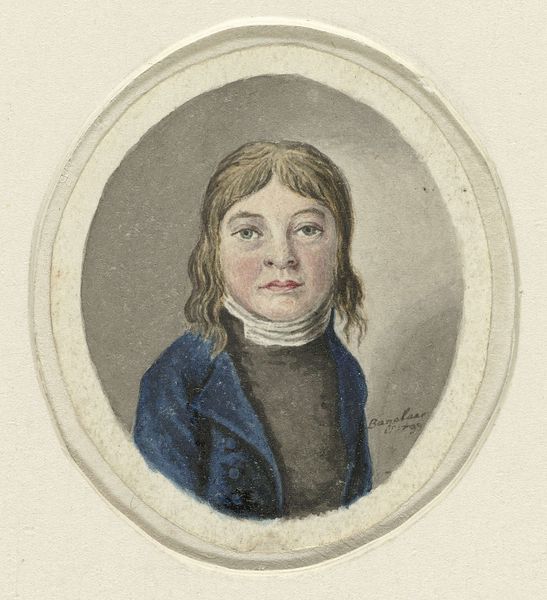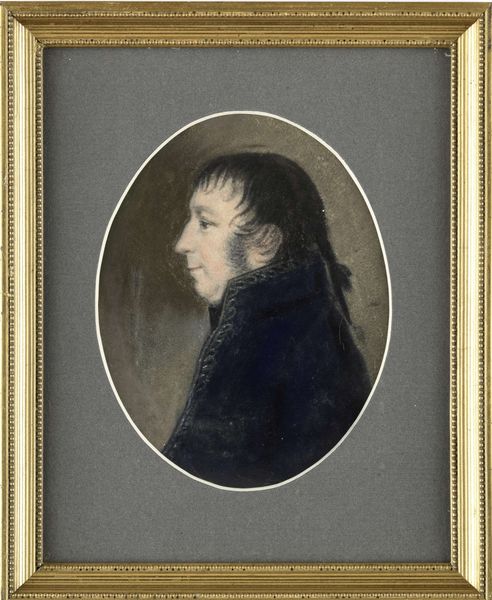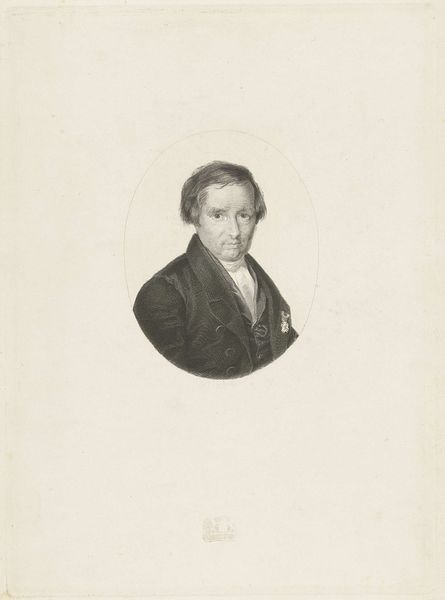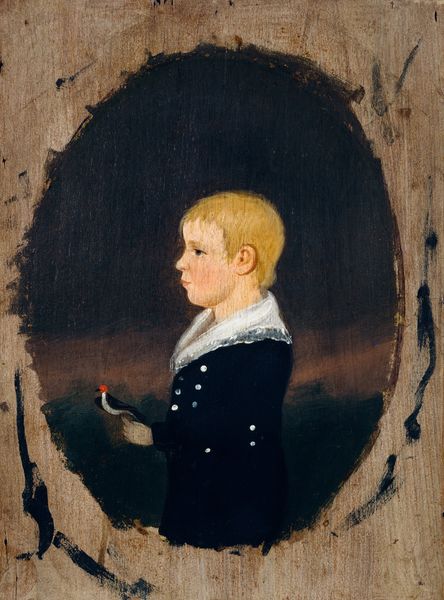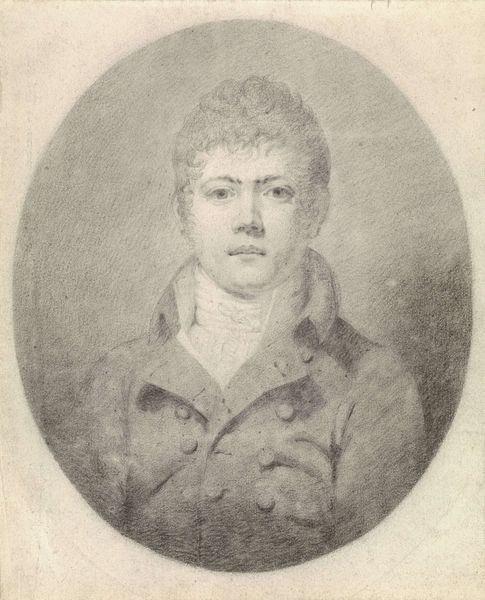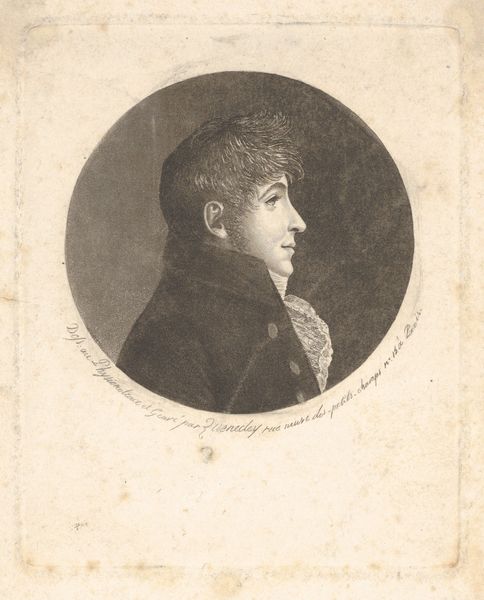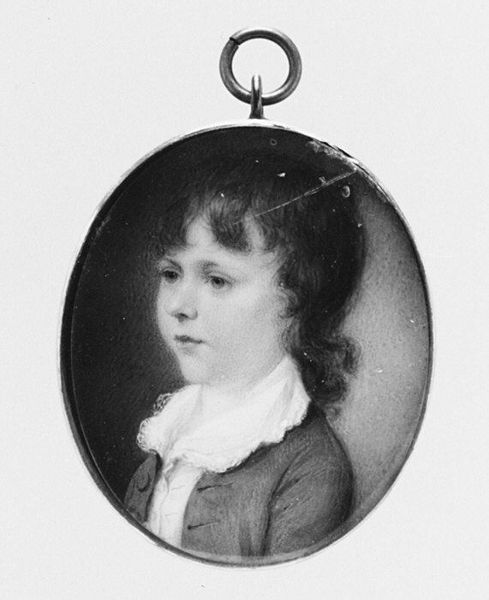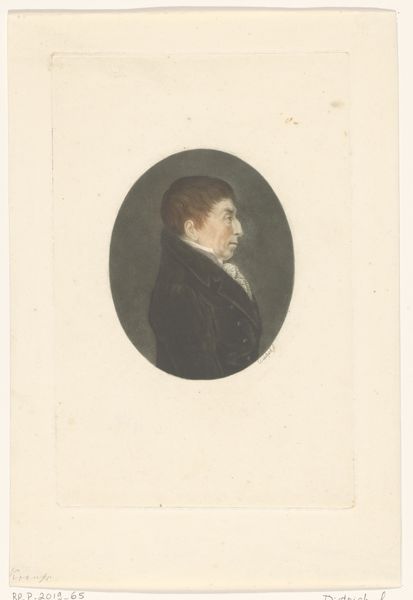
painting, watercolor, pencil
#
portrait
#
gouache
#
neoclacissism
#
painting
#
watercolor
#
coloured pencil
#
pencil
#
miniature
Dimensions: 2 5/8 x 2 1/4 in. (7.1 x 5.2 cm)
Copyright: Public Domain
Curator: Immediately striking! He looks a little forlorn, a boy prematurely aged. Editor: Indeed. What we're looking at is a portrait miniature of Pryor Smallwood, created between 1795 and 1801 by James Peale. It’s currently held at the Metropolitan Museum of Art. Peale employed watercolor, gouache, and pencil to capture his likeness. Curator: It’s the eyes. Such piercing blue against that wispy, almost ethereal watercolor. I wonder if the somberness was an artistic choice or a reflection of the child himself? And it’s amazing the details Peale achieved at such a scale using those materials. It seems such an ephemeral rendering for what must have been intended as a legacy object for his family. Editor: Watercolor and gouache miniatures like this one were relatively common in the late 18th century. It was partly driven by portability and relative affordability, even among wealthy merchant families. Consider the labor, the preparation of the pigments, the delicate touch required. These miniatures occupied an interesting intersection of fine art, craft, and commercial product. These miniatures would have been precious keepsakes passed down through generations, serving not only as representations of loved ones but also as symbols of social status and family legacy. Curator: Ah, legacy... there it is. Although even considering its place amongst other similar commissions, that translucent background... it lends such vulnerability. It feels quite radical given that these miniature portraits tend to skew toward a depiction of power, wealth, social standing. Editor: And Peale comes from quite a lineage, too. The brother of Charles Willson Peale and uncle to other notable painters like Raphaelle and Rembrandt Peale. These artists were not only invested in painting but were entrepreneurs and innovators pushing boundaries, testing different materials, production techniques. They understood the American art market was developing. Curator: Makes me want to know young Pryor's story all the more! Did he know of his portrait being a potential family legacy item when he posed for it? And that dreamy rendering—quite intentional, then. Editor: Perhaps the somberness hints at what came after; his presence, in object form, remains. These material artifacts contain silent histories, prompting us to imagine what these sitters lives might have been.
Comments
No comments
Be the first to comment and join the conversation on the ultimate creative platform.
